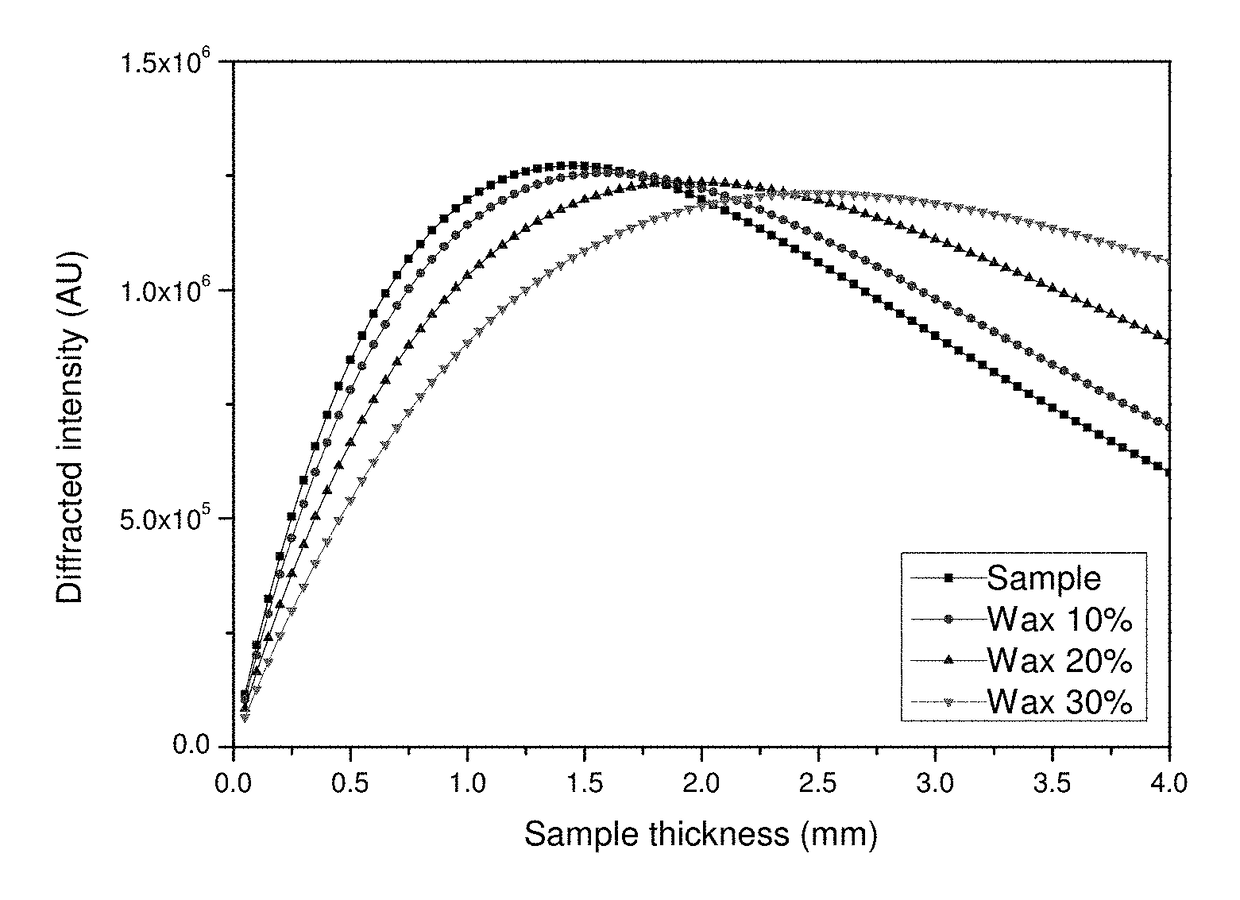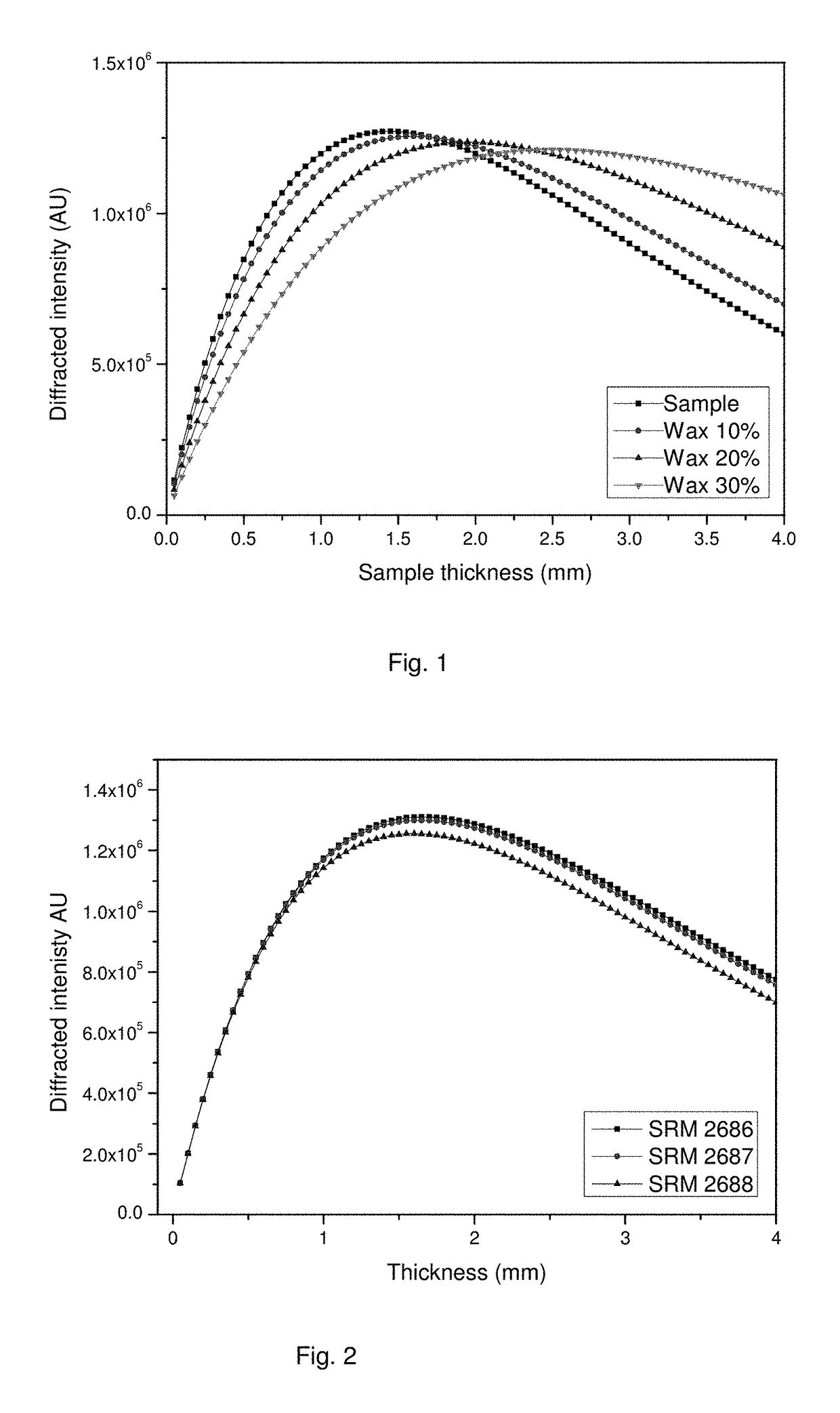Quantitative X-ray analysis—matrix thickness correction
a quantitative x-ray analysis and matrix thickness correction technology, applied in the direction of material analysis using radiation diffraction, instruments, measurement devices, etc., can solve the problems of insufficient sample size, difficult to carry out accurate quantitative analysis of diffracted x-rays, and sample itself may absorb x-rays, etc., to reduce the time to complete the measurement of a sample
- Summary
- Abstract
- Description
- Claims
- Application Information
AI Technical Summary
Benefits of technology
Problems solved by technology
Method used
Image
Examples
examples
[0089]An experimental example was carried out to test the validity of the approximations made, as well as the applicability of the method. A set of pressed pellets was made from a clinker matrix spiked with appropriate free lime (FL) quantities to yield final FL concentrations equal to 0%, 0.5% 1%, 1.5%, 2%, 3%, 4% and 5%. According to equation (6) it is possible to construct a calibration line which relates the corrected diffraction intensities with the concentration of the FL. The results are shown in FIG. 5.
[0090]For comparison the uncorrected intensities are also plotted as function of the FL concentration. Note that the application of the correction improves the quality of the calibration line considerably. There is much less variability and the gradient of the line is steeper which makes accurate intensity measurement possible.
PUM
| Property | Measurement | Unit |
|---|---|---|
| atomic number | aaaaa | aaaaa |
| thicknesses | aaaaa | aaaaa |
| thickness | aaaaa | aaaaa |
Abstract
Description
Claims
Application Information
 Login to View More
Login to View More - R&D
- Intellectual Property
- Life Sciences
- Materials
- Tech Scout
- Unparalleled Data Quality
- Higher Quality Content
- 60% Fewer Hallucinations
Browse by: Latest US Patents, China's latest patents, Technical Efficacy Thesaurus, Application Domain, Technology Topic, Popular Technical Reports.
© 2025 PatSnap. All rights reserved.Legal|Privacy policy|Modern Slavery Act Transparency Statement|Sitemap|About US| Contact US: help@patsnap.com



